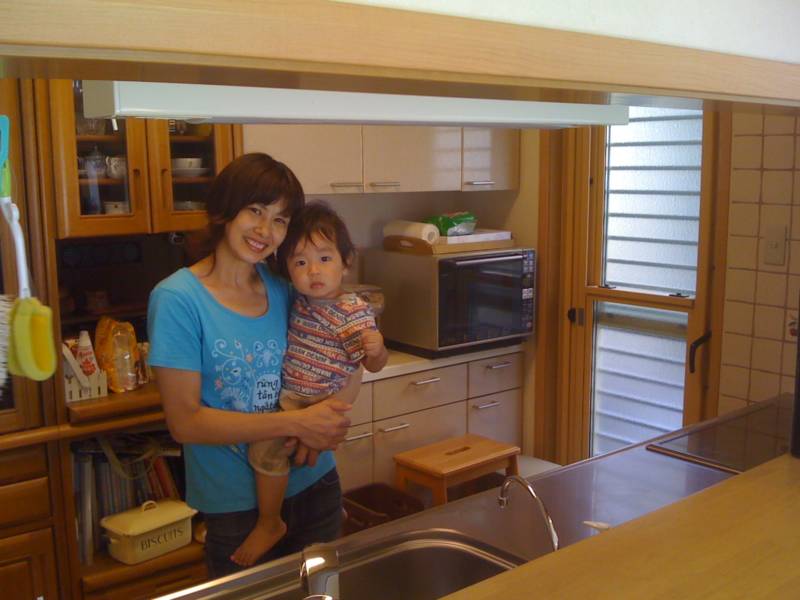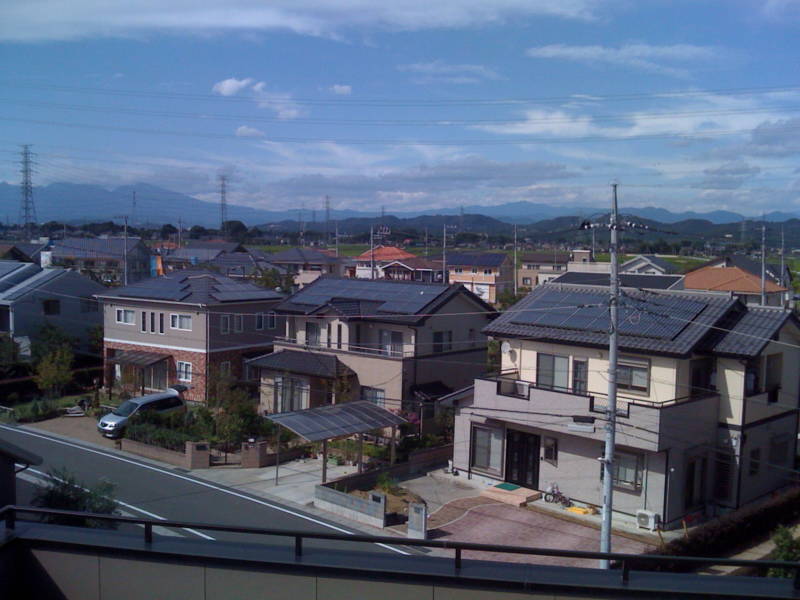
It may have a silly name, but its mission is all business: Paltown, a neighborhood of around 800 homes outside the Japanese city of Ota, built by the government to study what happens when an entire neighborhood goes solar. This is what I find most fascinating about the Japanese: they’re so meticulous in tackling problems that they establish entire towns as part of their tinkering.
Each of the 758 homes in Paltown has photovoltaic panels on top of it. Paltown’s purpose is to work out the kinks of concentrating PV capacity in one neighborhood. One of the problems they’re looking at: On PV homes, the excess energy goes back to the grid. If the grid’s transmission lines are at capacity, a suppression system on most arrays kicks in, reducing the amount of power they generate. This, in turn, squanders the panels’ full generating potential. Engineers at Paltown prevented the suppression system from kicking in by storing excess energy in batteries on the sides of the homes. That energy is then used in the evening, when the panels aren’t generating any electricity. Since it was established in 2002, Paltown has rarely generated too much electricity for the grid to handle. In fact, it has only happened during the holidays, when the biggest electricity consumer, the local Subaru assembly plant, shuts down. But when it has, the batteries worked.

Another thing they’re looking at is developing a system to stop sending electricity to the grid during a natural disaster. Japan is one of the most seismically active countries on Earth. When earthquakes damage homes, PV panels will usually continue to generate electricity, making a damaged system very dangerous for anyone near it. Paltown engineers have developed technology that will turn them off in these situations, they’ve patented the technology, and will soon start selling it to PV manufacturers.
Paltown pulled the plug on the battery experiment last year. The battery packs were removed but the working panels remain, along with the people who actually live here, in this renewable energy petri dish. What do they think? Asako Sugawara moved here with her husband and three children five years ago. They earn between thirty and eighty dollars a month from their solar panels. That will almost double when Japan’s Feed-in Tariff kicks in. She meets up with other housewives in the neighborhood each day, and the conversation inevitably turns to new ways they can save money. Lately they’ve been talking about the new feed-in tariff system. They’ve also shared methods of using electricity to get the biggest bang for their buck. “I’ve learned that electricity rates are the lowest after 11 at night, so I and many other housewives I know set timers on all of our appliances so that they use electricity in the middle of the night,” she told me. So much for using renewable energy when it’s available.
Rob’s radio series on energy efficiency in Japan concludes Monday morning on The California Report. All of Rob’s radio reports, blog posts, photos and video clips are collected on the Rising Sun series page.
One thought on “Powering Paltown: Pushing PV in Japan”
Comments are closed.

I’ll be moving into a home equipped with solar panels in November. The community of some 36 homes is called Socap in Sacramento. The panels were funded in part by SMUD which paid half of the costs. One resident with whom I spoke had a -$8.00 SMUD bill in August. Have you done any studies on this community and its impact on the grid?